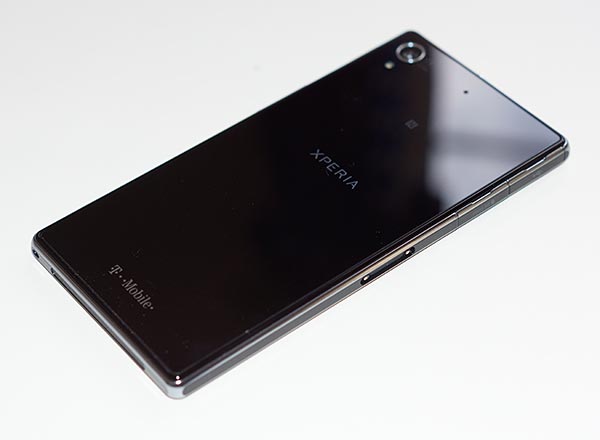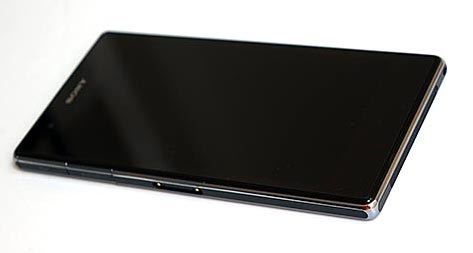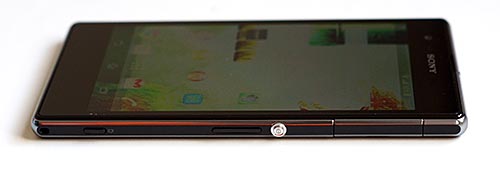Sony Xperia Z1S Full Review
12:56
Why is it so darned hard to get Sony Xperia smartphones here in the US? Happily, T-Mobile has decided to offer Sony's flagship Android smartphones, albeit with a few months delay from their international release. The Xperia Z1S is the T-Mobile US version of the well-received Xperia Z1, and just a few things have changed: LTE bands, the headphone jack has moved to the center on the Z1S and S is a hair taller. The Xperia Z1S has flagship specs including what's currently the fastest Android smartphone CPU, the 2.2GHz Qualcomm Snapdragon 800 quad core, 2 gigs of RAM and 32 gigs of internal storage. The phone has dual band WiFi 802.11ac with WiFi calling and mobile hotspot, Bluetooth 4.0, GPS as well as NFC. Unlike some Sony phones and tablets, the Xperia Z1 and Z1S do not have the IR blaster and AV remote control feature. T-Mobile prices it at a reasonable $528, or zero down with 24 monthly payments of $22.

The Xperia is a good looking phone with a black glass back (sorry, T-Mobile doesn't offer different colors) and a slim 0.34", angular design. Those of you who detest plastic phones will likely find phones like the classy glass Xperia Z1S and HTC One more to your liking. The Xperia pulls ahead of the HTC One with a faster CPU and a much higher resolution camera: 20.7 megapixels of imaging goodness vs. 4MP for the HTC One. In fact, the Sony has the highest megapixel count of any Android smartphone on the market. That translates into more fine detail, which is useful for those who want to use larger images or make prints.
The phone is a bit larger than competing 5" Android phones, and the rectangular design looks great but is less comfy in the hand than curvy phones like the LG G2and Samsung Galaxy S4. The corners aren't sharp in the least, they're simply less hand friendly than gentle curves. The phone looks and is well made, and Sony's Xperia design language sets it apart from a sea of like-looking Android phones. It has a micro SDXC card slot and micro SIM card slot (under side doors), Sony's Xperia-style rounded metal power button, a dedicated camera button, a 3.5mm headphone jack up top and a speaker that runs the length of the bottom edge. Though glass-backed phones seem vulnerable, our also-glass backed Xperia Z has held up well, and we expect the same of the Z1S.
Waterproof and Dust Resistant
Here's something you don't usually see in a "designer" phone: the Xperia Z1S is waterproof and dust resistant (IPX5 and IPX8 rated).  Most ports are covered by doors to prevent water intrusion, though the speaker and headphone jack are open and treated to be waterproof. For plumbers, outdoor workers, those who play by the pool and Adrian Monk types that want to wash their phones, this is a godsend. Underwater photographers will also enjoy the Z1S, but remember, you're limited to using the dedicated camera/shutter button the side, because capacitive touch doesn't work underwater.
Most ports are covered by doors to prevent water intrusion, though the speaker and headphone jack are open and treated to be waterproof. For plumbers, outdoor workers, those who play by the pool and Adrian Monk types that want to wash their phones, this is a godsend. Underwater photographers will also enjoy the Z1S, but remember, you're limited to using the dedicated camera/shutter button the side, because capacitive touch doesn't work underwater.
 Most ports are covered by doors to prevent water intrusion, though the speaker and headphone jack are open and treated to be waterproof. For plumbers, outdoor workers, those who play by the pool and Adrian Monk types that want to wash their phones, this is a godsend. Underwater photographers will also enjoy the Z1S, but remember, you're limited to using the dedicated camera/shutter button the side, because capacitive touch doesn't work underwater.
Most ports are covered by doors to prevent water intrusion, though the speaker and headphone jack are open and treated to be waterproof. For plumbers, outdoor workers, those who play by the pool and Adrian Monk types that want to wash their phones, this is a godsend. Underwater photographers will also enjoy the Z1S, but remember, you're limited to using the dedicated camera/shutter button the side, because capacitive touch doesn't work underwater.
Display

Full HD displays are the norm for high end smartphones, and the Xperia Z1S doesn't disappoint with its 5" Triluminos display. Sony features like Mobile Bravia 2 and X-Reality are here as well to enhance photo and video for increased saturation and contrast. The downside is viewing angles aren't as good as IPS displays or the Super AMOLED on the Samsung Galaxy S4. We noted some contrast and color fading when viewing the phone off angle, but I could still easily read the display when it was sitting near me on a desk. For those who generally hold the phone directly in front of themselves, it's not an issue, but for those who frequently share their display when watching video, it might be. In the Sony's favor, color accuracy and saturation are some of the best we've seen on an Android smartphone, and movie watching feels cinematic: colors are natural and bold without being cartoonish, contrast is pleasing and human flesh tones are warm and pleasing.Like the LG G2 and Nexus 5, the Xperia uses on-screen Android back, home and multi-tasking buttons that take up a bit of bottom screen real estate, rather than capacitive or physical buttons like the Galaxy S4. When you're in an app, these buttons will generally turn into small dots as placeholders so they're visually less distracting than button graphics. On the downside, you have to remember what each of those three dots represents.
Calling and Data
The Xperia Z1S is the T-Mobile US version of the Z1, thus it has worldwide quad band GSM and EDGE with support for T-Mobile's 3G HSPA+ and 4G LTE bands. The phone has pentaband 3G (850/900/1700/1900/2100MHz) and LTE on bands 4 and 17. That means it will work on both GSM and 3G in most places in the world, but only on T-Mobile for LTE (note that you'll have to get an unlock code if you wish to use another carrier's SIM card). Data speeds will of course vary depending on coverage in your area. Here in Dallas, Texas, T-Mobile recently rolled out wideband LTE (20 + 20MHz spectrum) for theoretical 150Mbps max download and 50mbps upload speeds. In fact, close to a cell tower beside a T-Mobile store, we actually did get 100.97mbps down and nearly 30mbps up according to the speedtest.net app. Wow! T-Mobile will roll out wideband LTE in some but not all cities, but all major metro regions should have standard 10 or 20MHz spectrum LTE by now.
Call quality is very good on the Xperia Z1S, and both incoming and outgoing voice are clear and full. Speakerphone volume is a bit lower than average while earpiece volume is average. Sony's waterproofing of the earpiece hasn't degraded voice quality or volume, but we suspect it might be to blame for the not terribly loud speaker. Headphone quality is excellent and we really enjoyed listening to music via a decent quality wired headset. Of course you can use Bluetooth wireless speakers, stereo headphones and mono headsets with the phone, and we found audio quality to be good over Bluetooth.
Horsepower and Software
Just as with the Galaxy S4 and LG G2, the current all-star CPU is under the hood. The 2.2GHz Snapdragon 800 quad core CPU with Adreno 330 graphics is currently the best you can get in an Android phone, and it can handle anything you throw at it. 3D games like Real Racing 3, 4K video playback: it's all good. The phone feels fast and smooth in operation with quick app load times and fluid animations.
It helps that Sony's light customization of Android Jelly Bean 4.3 doesn't weigh down the phone, as do the heavier skins and customizations on the LG G2 and Samsung Galaxy phones. In fact, we really like Sony's tasteful and restrained approach to Android. They do add several programs that work hand-in-hand with Sony's various online services, including Album, Movies, Walkman and PlayStation Mobile. Even if you don't use Sony's cloud services or wish to rent/buy movies from them, these are great looking multimedia playback apps with quick access to EQ, locally stored media, cloud media and even native support for network hard drives that act as media servers via dLNA. PlayStation fans will enjoy PlayStation Mobile where you can download some of the same PS Vita and PlayStation 2 games but ported to Android. There's also a PlayStation app with access to your PSN profile, friends list, trophies and a PlayStation 4 second screen feature. It's refreshing that Sony's software additions make the phone more fun and easy to use for multimedia and gaming rather than just adding bloat.
Camera
Here's the star of the show: the 20.7 megapixel rear camera with a relatively large (by phone standards) 1/2.3" Sony Exmor RS sensor and a fast Sony G f/2.0 lens. No, it won't impress Nokia Lumia 1020 owners for sensor size and resolution, but the Xperia's speed will impress Lumia owners. The phone has quick shot times and fast focus times in good light. In a very dim to dark room, focus is slower, but the same is true of most camera phones. Image detail is excellent and noise is held in check with ISO under 400 to 800. Colors are bold and natural and exposure is good, though in intelligent auto mode, it does blow out some highlights in high contrast scenes. Certainly the images are good enough that you'd be hard pressed to tell the difference between images taken with the Xperia Z1S and a 16MP point and shoot.
Today's top Android phones have 13MP cameras and the Samsung Galaxy S4 Zoom (more of a camera than a phone in terms of design and ergonomics) is 16 megapixels. More pixels don't always mean better images, but in this case those pixels mean better 8 x 10 prints or photo frame images and finer detail for larger images used on websites. If you rarely look at your camera phone's photos on anything but your phone, this won't matter. But for those who do use images for websites, photo sharing and playback on larger screens the Sony has an edge.
The camera can shoot 1080p video, but it uses digital image stabilization rather than optical image stabilization (OIS). Few phones have OIS, with the Lumia 1020 and LG G2 being two in that rare club. OIS increases hand motion smoothness more effectively than digital stabilization. That said, Xperia footage doesn't look jerky or jumpy, but we could see some jitter and jumps caused by our less than steady hands.
Sony sets their intelligent auto mode as the default, and it does a good job when the scene is well lit. In dark settings, I found using manual settings reduced image noise, though I suspect average users will be happy with auto mode's results. When in iAuto mode, you won't see lots of settings, but once you select manual you'll get a wealth of settings for shutter speed, ISO, metering, stabilization, white balance and a selection of scene modes. Sony offers additional modes including a background defocus mode to create SLR style bokeh, Info-eye (augmented reality plus 2D and 3D bar code readers), timeshift burst, sweep panorama and picture effects.
The Xperia has a front 2.1MP camera that can shoot 1080p video and yields clear and bright video chat footage.
Battery Life
Like the LG G2, the Xperia Z1S is an "average" size Android phone with a huge battery inside. That translates into excellent runtimes, even with brightness turned up and both LTE and WiFi on and active throughout the day. The 3,000 mAh battery is sealed inside, and we had no trouble making it through the day (8am to 10pm) with moderate to heavy use that included web browsing, HD video streaming for an hour, email, using the GPS for a 30 minute trip, playing music in the background with the display turned off for an hour and playing games for 45 minutes.


0 comments